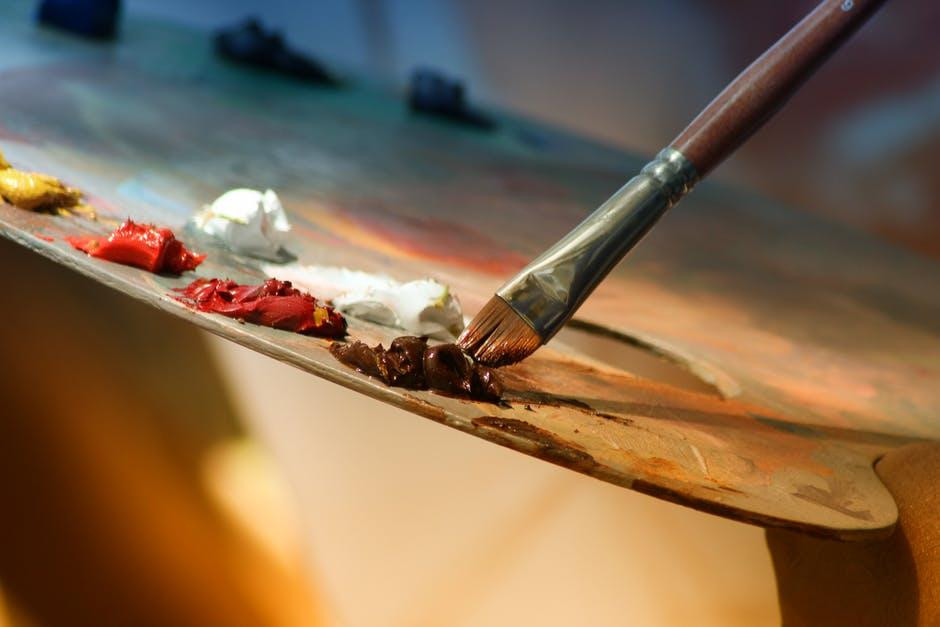Even Color Tells a Story: Watercolor Versus Oil Paintings
Even Color Tells a Story: Watercolor Versus Oil Paintings
Art is phenomenal in that there are hundreds of medium available to use to make a piece of work: paint, chalk, spray paint, pencil, pen, colored pencil, pastels – you name it. Delving into the topic of paint, even more categories are available. However, knowing the differences between your watercolor and oil painting is especially potent to ensure the work of art can be most appropriately preserved and displayed; it is not just a matter of whether one prefers a dainty work over a more vibrant work to be displayed in their home. With different types of paints comes different levels of maintenance and care.
Read on to learn more about what makes watercolor and oil paintings different to best understand how one can present and care for each of them.
1. Intent
Before we get into the actual care and maintenance of oil and watercolor paintings, let’s look at the intent, or purpose, of these works. Watercolors are clearly light and often pastel. To one, this signifies innocence, dreaminess, and softness – typically with subjects pertaining to nature. They are wonderful to display in a home with less harsh colors or in a room where one wants to wind down.
On the flip side, Oil paintings are more vibrant and intricate in detail, and a variety of subjects are used. While oil works can be beautiful and relaxing like watercolors, they are often perceived as more serious and realistic which clearly can have more versatility when presented in a home depending on the subject and colors used.
Knowing the intent of a medium used in art gives us background of how we can care for each work. If a work is meant to be viewed as something delicate, wouldn’t it make sense that the actual paint itself and the work that goes into the piece of art be more delicate too – and vice versa?
Let’s see...
2. Thickness & base
If there’s anything most people know about watercolor works is that the paints are water-based – hence the name, ‘watercolor.’ As for oil paintings, it is clear that the paints used are oil-based, making them thicker than watercolors.
To get a clearer idea, imagine stirring a cup of water and then stirring a cup of, say, olive or canola oil. It is obvious which is thicker and denser!
With that said, watercolors are much more prone to fading with time. As one could imagine, the reverse is true for oil paints. Oil paintings are more reliable in terms of their longevity as they are thicker on a canvas or other material they are painted on. Watercolors, while they can seep through materials such as paper, are a fraction as thick as one layer of oil paint.
3. Pigment
Watercolored works have less pigmentation and fewer bright colors than their oil painting counterpart, offering more transparent results. Meanwhile, pigments are deeper, and layers can easier be provided via oil paintings.
This means oil paintings are tougher and less delicate than watercolors. Colors that are more vibrant have a better capability to stay strong through a variety of conditions. If fading does occur, the colors are still powerful. However, when watercolors are slightly faded, they seem to practically disappear. Even if oil and watercolor paintings had the same sensitivity to the sunlight and other elements, it is safe to say that oil paintings would still win as their darker colors mean greater ability to withstand damaging conditions.
4. Construction
Even the physical use of watercolors and oil paints varies which can tell us about the care we should provide for these two very different works of art. With watercolors, all an artist requires is a piece to display their work on (e.g., paper), water, and a paintbrush. The simpler the construction, often the less durable it is. Additionally, because there are only so many ‘layers’ one can provide for watercolors, layering does not help significantly in making colors more resisting to sunlight and other damaging sources.
To construct an oil painting, however, one requires canvas or another surface to paint their work on, oil paints, lindseed oil, turpentine, and a paintbrush. Many oil paintings are also finished off with a layer of varnish to provide both consistency in either matte or gloss and extra protection from sunlight, dirt, dust, water, and other aspects. Through the process of oil painting, many layers are provided. Multiple layers means less likely to get damaged. On the other hand, the delicate construction of a watercolor work are particularly sensitive, even when several layers of watercolor are used.
Also different in the construction of watercolor and oil paintings is that watercolors have very light, pale brushstrokes in which get darkened as the artist goes back over a few spots, whereas with an oil work, initial strokes are deep and dark and have light strokes added thereafter. Again, this tells us about the layering of each work, and in turn, how delicate watercolors can be over oil paints.
Additionally, because watercolors dry lighter after completion and oil paints dry darker, the paint hue is another clear giveaway of which paint provides greater permanency. Due to the thickness and other differences in paints, oil paints also dry significantly slower than watercolors, which tells us that oil paints are not as subtle.
5. Touch-up & maintenance
Touching up and maintaining oil-based works is a lot simpler than providing such for watercolored pieces of art. Watercolors are much less forgiving, making them the most complicated of the main types of paints to both work with and to display. Meantime, oil paints can be reapplied easily thanks to their opaqueness; thus, mistakes can be covered in one simple stroke, and faded sections can be refurbished to their former glory.
As for watercolors, mistakes continue to show through even when attempts are made to fix them. For instance, to change the color of one section of the work only results in two obviously overlapped layers due to the transparency of the paints themselves. Maintenance can also be a hassle with watercolors as due to their delicacy, this means placing them near direct or indirect sunlight can be very damaging for them through time. Even when not placed near sun, these works require extra protection.
On the other hand, oil paintings can withstand sunlight fairly well with little to no fading. This makes them more ideal for individuals who aren’t into a whole lot of maintenance.
6. Lighting up your paintings
Seeing that oil paintings are thicker, oil-based, more pigmented and opaque, constructed with more materials, and require less maintenance yet are easier to touch up when – if ever – necessary, it is clear that oil paintings are more durable than watercolored pieces of art in many ways.
With the latter information in mind, let’s talk about how one can safely display and light up their work of art.
Oil paintings, as we mentioned, are for the most part safe in sunlight. However, it is not a bad idea to provide extra protective measures (e.g., UV protection sprays, varnish, UV glass, etc.) just to be on the safe side. If opting for a picture light, oil paintings can be lightened up with virtually any bulb as they can take on the strength of UV rays greater than watercolors. Broad-based bulbs are best for oil works as they contain gloss and highlights that would otherwise cause reflection and glare if given a more direct and intense type of bulb. Because oil paintings can be deep and rich, options for lighting up these works of art are generally flexible.
Watercolors are much less versatile and should never be displayed near sunlight as both heat and the rays themselves can irreversibly damage the artwork, even with extra protection at hand. Plus, many water-colored works are created on paper which can easily wither away in sunlight. As for picture lights, only certain bulbs should be used to light up these works of art. Halogen and incandescent bulbs contain UV rays too harsh for watercolor paintings to handle. On the other hand, LED bulbs are a good option for watercolors as they produce barely any heat, emit low amounts of UV light, and as a bonus are energy efficient and long-lasting.
Looking for that perfect picture light to best suit your work of art? Cocoweb.com has an immense selection sure to safely light up your work without the excessive heat and UV rays associated with natural light.
Conclusion
It’s no secret that watercolor paintings have a more delicate intent, are thinner, have a less dense base, contain less pigmentation, have a less complicated construction, dry quicker and lighter, require greater touch-up and maintenance overtime, and have to have special care provided whether professionally lighten up or not. Oil paintings are virtually the complete opposite. While they can get damaged and should be protected even when showcased in light with lower UV rays, they are thicker, less delicate, long-lasting, and less prone to damage.
With that in mind, maintenance, general care, and lighting up – whether with natural light or a picture light – each work is different. When displaying and lighting water-colored art, one should be extra careful, while with oil paintings, there is less to be concerned about. As a bottom line, it is crucial that regardless of the medium used, your artwork is understood and cared for based on what it requires.
Recent Posts
-
Top 5 Mistakes to Avoid When Buying Home Lighting
Lighting plays a crucial role in shaping the ambiance, functionality, and aesthetic appeal of your h …26th Jun 2025 -
Why Lighting Is the Most Underrated Design Element in a Room
Walk into a well-designed space, and you might first notice the color of the walls, the statement fu …13th May 2025 -
How to Choose the Perfect Painting for Your Home or Office
When it comes to decorating your space, choosing the perfect painting can be a game-changer. A well- …7th Feb 2025




